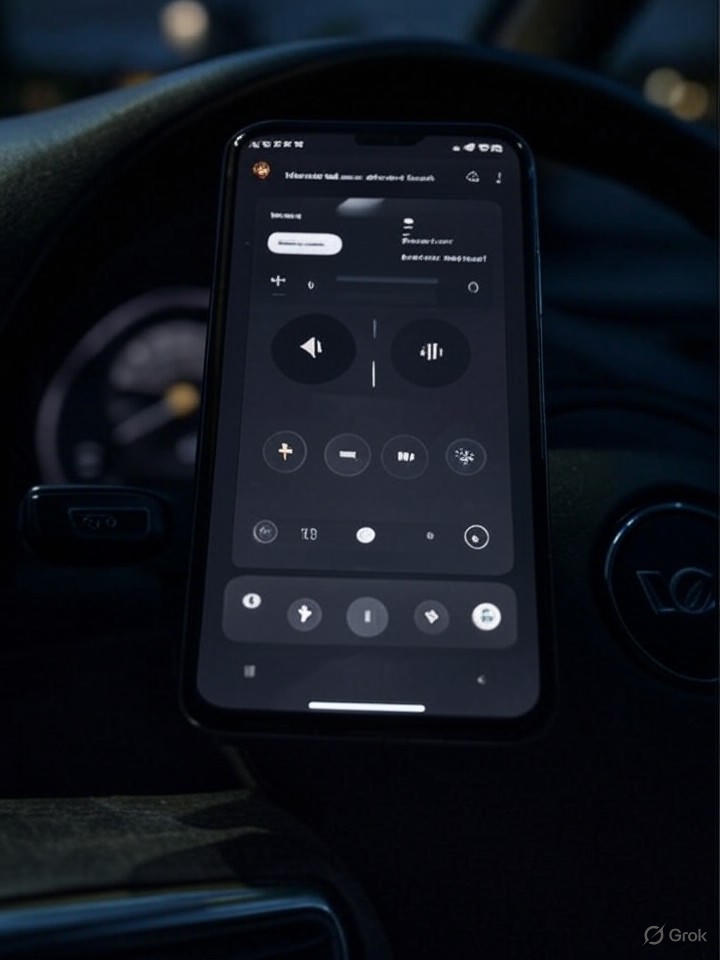In the ever-evolving world of automotive infotainment, Google’s Android Auto has long been a staple for drivers seeking seamless integration between their smartphones and vehicles. But recent updates to its interface have sparked a wave of discontent among users, particularly those who rely heavily on music playback during commutes. The latest refresh, incorporating elements of Google’s Material You design language, introduces vibrant colors and a revamped layout aimed at enhancing usability. However, as reported in a detailed piece by Android Authority, many music enthusiasts are voicing frustration, arguing that the changes prioritize aesthetics over functionality, making it harder to navigate playlists and controls while on the road.
This backlash isn’t isolated. Industry insiders point to the update’s rollout in version 13.4, which quietly overhauled the music player interface, as noted in an analysis from autoevolution. The new design shifts album art to a more prominent position and alters button placements, but critics argue it reduces glanceability—a critical factor for safe driving. Users on social platforms have echoed these sentiments, with posts highlighting how the refreshed UI feels cluttered and less intuitive, potentially increasing distraction behind the wheel.
The Roots of Discontent in Design Choices
Diving deeper, the criticism stems from Google’s attempt to align Android Auto with broader Android ecosystem aesthetics, including dynamic theming based on wallpaper colors. While this creates a cohesive look across devices, it has led to complaints about readability in varying lighting conditions. For instance, some users report that the new color schemes wash out text, making it challenging to read song titles or artist names at a glance. This issue is compounded by the layout changes, where progress bars and skip buttons are repositioned, requiring more deliberate interactions that pull eyes away from the road longer than before.
Feedback from the community, including posts found on X, reveals a pattern of dissatisfaction with these alterations. One common thread is the perceived downgrade in user experience for audio-focused tasks, with drivers lamenting the loss of a more streamlined interface from previous versions. Publications like Android Police have gone further, calling for a massive overhaul, citing persistent frustrations in 2025 despite years of iterations. They argue that Google has not adequately addressed core usability issues, leaving Android Auto feeling like a work in progress.
Upcoming Updates and Potential Remedies
Looking ahead, Google has teased significant enhancements for Android Auto in 2025, including integration of Car Media for broader entertainment options like YouTube streaming and even web browsing, as outlined in a preview from The Car Player. These features aim to transform the platform into a more versatile in-car companion, potentially addressing some criticisms by offering customizable interfaces. Additionally, the introduction of gaming support and digital car keys, detailed in a blog post by CarPlay Hacks, suggests Google is expanding functionality to keep pace with competitors like Apple’s CarPlay.
Yet, the question remains whether these updates will rectify the interface grievances. Insights from Ubergizmo indicate that video playback and browser apps are on the horizon, announced at Google’s I/O 2025 event, which could enrich the experience but also risk further complicating the UI if not implemented thoughtfully. Industry experts suggest that Google might incorporate user feedback loops more aggressively, perhaps through beta testing programs, to refine the design before widespread deployment.
Broader Implications for Automotive Tech
The controversy surrounding Android Auto’s refresh highlights a larger tension in automotive technology: balancing innovation with safety and simplicity. As vehicles become smarter, interfaces must evolve without overwhelming users. Comparisons to Android 16’s features, as described on Android’s official site, show Google’s commitment to iterative improvements, but the auto-specific adaptations need finer tuning. Critics argue that without addressing these pain points, Android Auto risks alienating its core user base of daily commuters who prioritize reliability over flashy updates.
In response to the outcry, Google has acknowledged some issues in developer forums, promising tweaks in upcoming patches. Meanwhile, third-party solutions and hacks, such as those shared on Android Auto Hacks, offer workarounds like adding unsupported apps, providing temporary relief. For industry insiders, this episode underscores the importance of user-centric design in connected car systems, where even minor changes can have outsized impacts on adoption and satisfaction.
Navigating the Road Ahead
As 2025 progresses, the evolution of Android Auto will likely involve a delicate dance between adding features and streamlining the interface. Posts on X reflect a mix of excitement for new capabilities and wariness about design missteps, with users calling for options to revert to older layouts. Publications like Nucleo Visual provide practical tips for maximizing the current setup, suggesting customizations that mitigate some criticisms.
Ultimately, Google’s challenge is to harness feedback to create an interface that feels intuitive and safe. With competitors advancing rapidly, the success of these updates could define Android Auto’s role in the future of in-car entertainment. As one insider noted, the platform’s strength lies in its adaptability—if Google listens, the refreshed interface could yet become a driver favorite rather than a point of contention.




 WebProNews is an iEntry Publication
WebProNews is an iEntry Publication